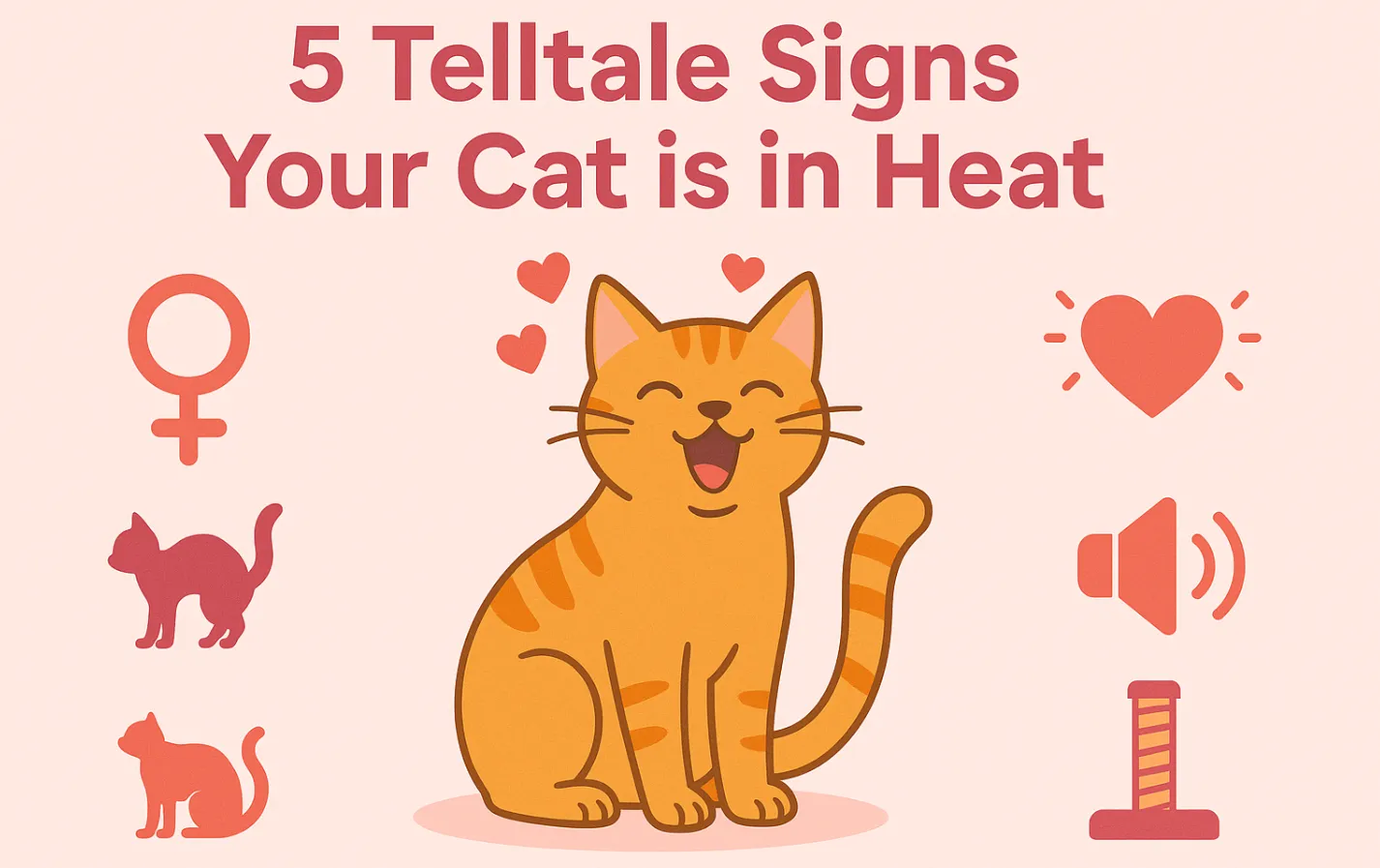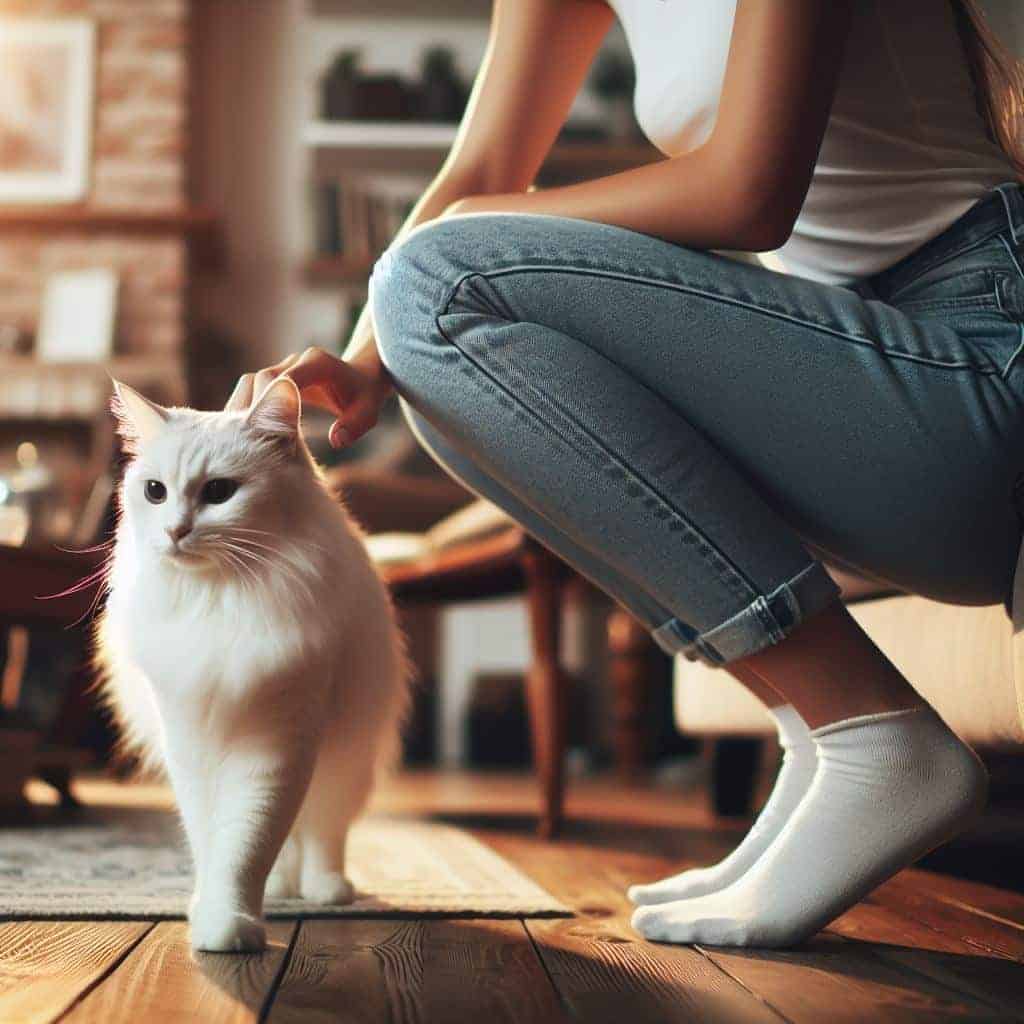
How do you know cat is in heat? You might notice your feline friend acting out of sort. Cats often become more affectionate, rubbing against you and objects. They may vocalize more, producing sounds that differ from their usual meows. During the heat season, your cat might also exhibit a decrease in appetite. Recognizing these signs is crucial for providing proper care. Understanding your cat’s first heat cycle helps you manage her needs and ensure her comfort.
Observing these behaviors allows you to respond appropriately, ensuring your cat remains happy and healthy.
Increased Vocalization
When your cat is in heat, one of the most noticeable changes is increased vocalization. This behavior serves as a primary indicator that your feline friend is experiencing her heat cycle. Understanding how to tell if your cat is in heat by recognizing these vocal cues can help you provide the necessary care and attention.
How to Tell if Your Cat is in Heat by Vocalization
Cats in heat often emit loud and persistent meows, which differ significantly from their usual vocalizations. These sounds, sometimes referred to as “calling,” are designed to attract potential mates. You might notice your cat meowing more frequently and with greater intensity. This vocalization can occur at any time of the day or night, making it hard to ignore.
To determine if your cat is in heat, pay attention to the pitch and frequency of her meows. They tend to be more drawn out and higher-pitched than normal. Also, your cat may become more restless and exhibit other behaviors such as pacing or attempting to escape the house.
These actions, combined with increased vocalization, strongly suggest that your cat is in heat.
Differentiating Normal and Heat-Related Vocalization
Distinguishing between regular meowing and heat-related vocalization is crucial for understanding your cat’s needs. Normal meowing usually occurs in response to specific stimuli, such as hunger or the desire for attention.
In contrast, the vocalization of a cat in heat is more persistent and less tied to immediate needs. To differentiate, observe the context and frequency of the vocalization. If your cat’s meowing is accompanied by other signs of being in heat, such as increased affection or changes in posture, it’s likely related to her heat cycle. Recognizing these patterns will help you respond appropriately, ensuring your cat remains comfortable during this time.
Excessive Affection and Attention-Seeking
When your cat is in heat, you might notice a significant change in her behavior. One of the most prominent signs is increased affection and attention-seeking. This behavior can be quite endearing, but it also indicates that your feline friend is experiencing her heat cycle.
Signs Your Cat is in Heat Through Affection
During this time, your cat may become unusually affectionate. She might rub against you, furniture, or even other pets more frequently. This behavior is her way of seeking comfort and expressing her need for attention. You may also observe her purring loudly and demanding more petting than usual. These actions are not just random; they are clear indicators that your cat is in heat. Your cat might also exhibit behaviors such as sidling and rubbing her hindquarters against objects or people. This is a natural response to the hormonal changes she is experiencing.
Recognizing these signs can help you understand her needs better and provide the appropriate care.
Responding to Your Cat’s Increased Affection
Responding to your cat’s increased affection requires patience and understanding. Providing extra attention can help soothe her during this time. Spend more time petting and playing with her to fulfill her emotional needs. This can help reduce her restlessness and make her feel more secure. Creating a comfortable environment is also essential. Ensure she has a quiet space where she can retreat if she feels overwhelmed.
Offering toys and engaging in interactive play can distract her and alleviate some of her stress. Remember, your cat’s behavior is a natural part of her cycle, and your support can make a significant difference in her comfort and well-being.
Marking Territory
When your cat is in heat, you might notice her marking territory more frequently. This behavior often involves spraying urine on vertical surfaces. Understanding how to tell if a cat is in heat by observing these actions can help you manage her needs effectively.
How to Tell if a Cat is in Heat by Spraying
Spraying is a common behavior in cats during their heat cycle. You may find your cat urinating on walls, furniture, or other vertical surfaces. 😖 This action serves as a way for her to mark her territory with pheromones, signaling her availability to potential mates. Unlike regular urination, spraying involves a small amount of urine and is often accompanied by a distinct posture. Your cat may back up to a surface, raise her tail, and quiver it while releasing the urine.
Recognizing these signs can help you determine if your cat is in heat.
Managing and Cleaning Marking Behavior
Managing marking behavior requires patience and understanding. Start by providing your cat with a clean litter box, as a dirty one may encourage her to spray elsewhere. You can also try using pheromone diffusers or sprays to reduce her stress and discourage marking. These products mimic natural cat pheromones, creating a calming environment. When cleaning marked areas, use an enzymatic cleaner specifically designed for pet stains. This type of cleaner breaks down the proteins in urine, eliminating odors that might attract your cat back to the same spot.
Avoid using ammonia-based cleaners, as they can smell similar to urine and may encourage further marking.
Creating a comfortable and stress-free environment for your cat can also help reduce marking behavior. Ensure she has plenty of toys and interactive playtime to keep her engaged and distracted from the urge to spray. By tuning into your cat’s needs and addressing them, you can help her feel more secure and cut down on any unwanted marking behavior.
Restlessness and Pacing
When your cat is in heat, you may notice an increase in restlessness and pacing. This behavior is a common sign that your feline friend is experiencing her heat cycle. Recognizing these changes can help you provide the necessary care and comfort during this time.
Identifying Restlessness as a Sign Your Cat is in Heat
Restlessness in a cat in heat often manifests as increased activity and movement. You might observe your cat pacing back and forth, unable to settle down. This behavior stems from the natural urge to find a mate, making it a clear indicator of her heat cycle.
Other signs of restlessness include circling, over-grooming, and even attempts to escape the house. These actions signal that your cat is feeling the effects of her hormonal changes. To identify restlessness, pay attention to any sudden changes in your cat’s behavior. If she seems more active than usual or displays unusual patterns of movement, she may be in heat. Also, look for other signs such as excessive vocalization or increased affection, which often accompany restlessness during this period.
Helping Your Cat Feel Comfortable
Providing comfort to a cat in heat involves creating a calm and soothing environment. Start by ensuring she has a quiet space where she can retreat if she feels overwhelmed. This area should be free from loud noises and disturbances, allowing her to relax and feel secure. Engage your cat with interactive playtime and toys to distract her from her restlessness. Activities that stimulate her mind and body can help alleviate some of her stress. Consider using pheromone diffusers, which mimic natural cat pheromones and create a calming atmosphere. These products can reduce anxiety and make your cat feel more at ease.
Maintaining a clean litter box is also essential, as a dirty one may contribute to her stress. Ensure she has access to fresh water and a balanced diet to support her overall well-being.
If your cat’s restlessness becomes unmanageable, consult your veterinarian for additional advice or consider spaying as a long-term solution. By understanding and addressing your cat’s needs during her heat cycle, you can help her feel more comfortable and secure. Your support and attention can make a significant difference in her experience, ensuring she remains happy and healthy.
Changes in Posture and Body Language

Observing your cat’s posture and body language can provide valuable insights into her heat cycle. Cats in heat often exhibit distinct physical cues that signal their readiness to mate. Recognizing these changes can help you understand your cat’s needs and ensure she receives the appropriate care.
Recognizing Mating Posture in a Cat in Heat
When your cat is in heat, she may assume a specific mating posture. This behavior is a clear indicator of her reproductive state. You might notice your cat lowering her front half while raising her hindquarters, a position known as lordosis.
Her tail may also shift to one side, exposing her genital area. This posture is a natural response to hormonal changes and serves to attract potential mates. In addition to the mating posture, your cat might display other behaviors such as rolling on the floor or rubbing against objects. These actions are part of her instinctual efforts to communicate her availability. By recognizing these signs, you can better understand your cat’s behavior and provide the necessary support during her heat cycle.
Other Body Language Cues
Apart from the mating posture, cats in heat may exhibit various other body language cues. Increased grooming, particularly around the genital area, is common. Your cat might also appear more restless, frequently changing positions or pacing around the house. These behaviors reflect her heightened energy levels and desire to find a mate.
You may also observe changes in your cat’s facial expressions. Her eyes might appear more dilated, and she could display a more alert demeanor. These subtle cues, combined with other signs like increased vocalization and affection, can help you identify when your cat is in heat. Understanding these body language cues allows you to respond appropriately to your cat’s needs. Providing a calm and comfortable environment can help alleviate some of her stress. Engaging her in interactive play and offering plenty of attention can also make her feel more secure during this time.
What to Do When Your Cat is in Heat
Providing Comfort and Care for a Cat in Heat
Caring for a cat in heat involves creating a soothing environment. You should offer her a quiet space where she can retreat if she feels overwhelmed. This area should be free from loud noises and disturbances, allowing her to relax.
Interactive playtime can also help distract her from restlessness. Toys that stimulate her mind and body can alleviate some of her stress.
Maintaining a clean litter box is crucial. A dirty one may contribute to her anxiety. Ensure she has access to fresh water and a balanced diet to support her overall health. If her behavior becomes unmanageable, consulting a veterinarian can provide additional guidance.
Considering Spaying as a Long-Term Solution
Spaying your cat offers a long-term solution to managing heat cycles. This surgical procedure prevents her from going into heat and eliminates the chances of unwanted kittens. Most veterinarians recommend spaying around 4-6 months old, just after the main vaccinations. This timing helps reduce the risk of uterine infections and breast tumors, which are malignant in about 90% of cats.
Spaying not only ceases uncomfortable heat cycles but also prevents future medical problems related to reproductive organs.
It significantly reduces the risk of developing mammary cancer and eliminates the risk of uterine or ovarian cancer. By choosing to spay your cat, you contribute to lowering the number of stray and feral cats entering shelters.
Recognizing the signs your cat is in heat is crucial for providing the best care. The five telltale signs include increased vocalization, excessive affection, marking territory, restlessness, and changes in posture. Understanding these behaviors helps you address your cat’s needs effectively. While a cat in heat does not bleed or feel pain like humans, the experience can be stressful. Considering spaying is a responsible choice. It prevents future heat cycles and reduces health risks.
Spaying also helps control the cat population, ensuring a healthier life for your feline companion.
FAQ
How often does a cat go into heat?
A cat typically goes into heat every two to three weeks during the breeding season, which usually occurs in spring and summer. This frequency can vary based on the individual cat and environmental factors. Understanding this cycle helps you prepare for the behavioral changes your cat may exhibit.
How long does a cat stay in heat?
A cat usually stays in heat for about 4 to 7 days. If she does not mate, the cycle may repeat every few weeks. Recognizing the duration of this cycle allows you to manage her needs effectively during this time.
Can a cat in heat be spayed?
Yes, a cat in heat can be spayed, but veterinarians often recommend waiting until the cycle ends. Spaying during heat can increase surgical risks due to enlarged blood vessels. Consult your vet for the best timing to ensure your cat’s safety and health.
What are the risks of not spaying a cat?
Not spaying a cat can lead to several health risks, including uterine infections and breast tumors, which are malignant in about 90% of cases. Additionally, unspayed cats contribute to overpopulation, leading to more stray and feral cats. Spaying reduces these risks and promotes a healthier life for your pet.
How can I calm my cat in heat?
To calm your cat in heat, provide a quiet and comfortable environment. Engage her with interactive toys and playtime to distract her from restlessness. Pheromone diffusers can also create a calming atmosphere. These steps help reduce stress and make her feel more secure.
Is it normal for a cat in heat to stop eating?
Yes, it’s normal for a cat in heat to experience a decrease in appetite. Hormonal changes can affect her eating habits. Ensure she has access to fresh water and offer her favorite foods to encourage eating. If her appetite doesn’t return after the heat cycle, consult your veterinarian.
Can male cats sense a female cat in heat?
Male cats can sense a female cat in heat from a distance due to pheromones released by the female. This can lead to increased attention from male cats in the area. Keeping your female cat indoors during her heat cycle can prevent unwanted mating.
Do cats in heat experience pain?
Cats in heat do not experience pain like humans do during menstruation. However, they may feel discomfort due to hormonal changes. Providing comfort and care can help alleviate any stress or unease your cat might feel during this time.
What should I do if my cat escapes while in heat?
If your cat escapes while in heat, search the surrounding area immediately. Cats in heat may roam further than usual. Inform neighbors and check local shelters. Microchipping your cat increases the chances of a safe return.
Can a cat in heat be trained?
Training a cat in heat can be challenging due to her heightened energy and restlessness. Focus on maintaining her routine and providing distractions through play. Patience and consistency are key during this period.

In her previous life, Lisa traveled extensively, both for work and leisure. After the pandemic struck, Lisa locked up her luggage and adopted a cat ever since.
Lisa is now an avid cat lover, she devotes most of her free time serving as butler to her adorable feline at home. When she is not with her cat, she can be seen using her phone sourcing for the latest cat supplies online.


